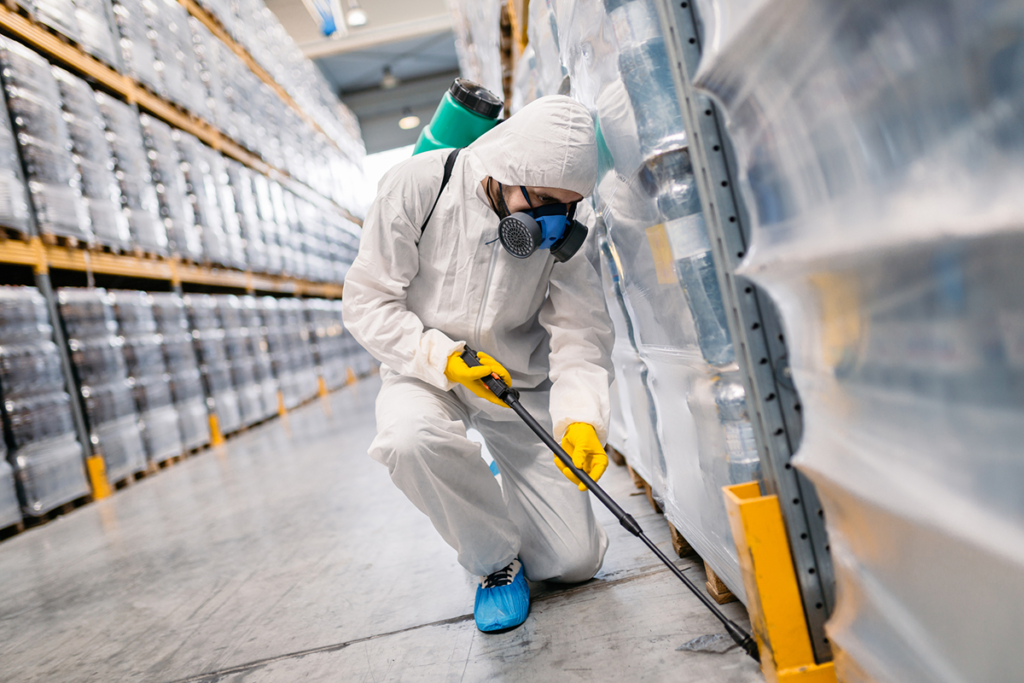Exterminator Vancouver BC are licensed professionals who specialize in the control of pests. They conduct a thorough inspection and develop a treatment plan based on their findings.
Pests can cause serious damage to homes and businesses and pose a health risk for humans and animals. Rather than simply killing pests, exterminators use environmentally conscious methods to remove them.

Infestations of ants, mice, and other pests are not only unsightly, but they can also damage the structure of homes or cause health problems. For this reason, it is crucial to seek the services of a professional exterminator as soon as you see evidence of an infestation. Exterminators are trained to use safe and effective methods to eliminate pests and prevent them from returning. They also understand the importance of protecting the environment and use eco-friendly treatments whenever possible.
An experienced exterminator will perform a thorough inspection to identify the type of pest and its level of infestation. They will then create a plan for treatment that may include traps, baits, or chemical treatments. They will also take into account any allergies or pets in the home when creating their treatment plan.
When you are looking for an exterminator, make sure that they have a valid business license and insurance. This will protect you in the event that an accident occurs while they are on your property. You should also ask about their training and qualifications. You should never hire a company that does not carry liability insurance and workers’ compensation coverage.
Pests can cause serious damage to your home, and if they are not dealt with quickly, they can lead to costly repairs. Some pests can also spread diseases that are dangerous to humans and pets. Pest infestations can also lead to health related issues such as asthma and other allergies. A qualified Exterminator NYC will ensure that your home is free from these pests and will help you to avoid any further complications.
Termite infestations are a serious threat to the structural integrity of homes. They can destroy wooden structures and affect the value of a property. Pest control experts can detect signs of infestation such as swarmer wings, mud tubes, and piles of sawdust. They can also offer preventive measures such as wood treatment and repair, termite inspections, and termite baiting.
Many homeowners try to treat their own pest infestations with over-the-counter products or DIY treatments, but these methods are often ineffective and can lead to recurring pests. A professional exterminator can eliminate even the most stubborn pests, including wood-destroying termites, powderpost beetles, and silverfish. They can also treat outdoor areas for rodents, such as squirrels and raccoons.
Safety
An exterminator must follow all local and state regulations regarding the handling of pesticides and other chemicals. He must also maintain accurate records of each inspection and treatment. In addition, an exterminator must be able to communicate with customers and explain the nature of their infestation and the necessary steps for removal. In some cases, this may include explaining the risks involved in using certain types of treatments and advising the customer of safety precautions.
The most important skill an exterminator needs is the ability to accurately assess the problem and determine what type of treatment will be most effective. This involves examining the entire property, including crawl spaces and attics. It also involves checking behind appliances, underneath sinks, and in corners. During the inspection, an exterminator should ask questions and listen to the answers in order to understand what type of pests are causing the problem.
Once an exterminator has identified the pest problem, he will then recommend the appropriate treatment. This may involve using traps or sprays, or it could include the use of more sophisticated devices such as pheromone lures or insect growth regulators. An exterminator should also be able to suggest ways that the customer can help prevent future problems, such as changing food storage or sanitation practices.
Exterminators often work in residential settings, but they can also be found working in restaurants, hotels, hospitals, and other types of businesses. In such cases, they must be able to work around employees and customers while maintaining a professional demeanor. They must also be able to work with business owners to develop a pest management plan that is tailored to the specific needs of each business.
An exterminator can be self-employed or a member of a large pest control company. Those who are self-employed can set their own hours, but those who work for a corporation typically have to adhere to a schedule. In either case, an exterminator should be punctual and reliable. He should also be able to work in extreme weather conditions and be prepared to deal with any unexpected situations that might arise during an appointment.
Experience
Exterminators deal with many different types of pests, including rodents, cockroaches and bed bugs. They are able to effectively identify and treat these pests by using various methods, such as chemical treatments and traps. They also provide recommendations to their clients on ways to prevent future pest problems, such as improving sanitation and sealing cracks or gaps in a building’s structure.
During an initial inspection of a customer’s home, an exterminator should be able to identify the type of pest problem and determine the best way to treat it. This requires a thorough understanding of the habits and reproductive cycles of the pests, as well as knowledge of how the pests gain entry into the structure. Exterminators also need to be able to recognize the signs of infestation and correctly interpret the pests’ droppings to ensure effective treatment.
When performing a pest control service, an exterminator should be able accurately estimate the amount of time and materials needed to eradicate the pests. They should take into account the size of the property, the number of pests present and their resistance to certain chemicals. This allows them to offer a fair price and avoid over-charging their customers.
An exterminator should have the ability to communicate clearly with their customers. This includes being able to explain the nature of the pest problem and the treatment plan, as well as answering any questions that the customer may have. In addition, an exterminator should be able explain the risks associated with a particular treatment and any precautions that must be taken.
Some exterminators may also be trained in wildlife pest control and may help to manage raccoon, skunk or possum populations by setting humane traps and relocating the animals. Others may be able to handle bird pests, such as pigeons and sparrows, by using humane capture techniques. They may also be able to recommend other contractors who can help with wildlife proofing and drainage solutions. Exterminators with the right skills and knowledge can make a difference in people’s lives, protecting health, food supply chains and property. If you are interested in a career as an exterminator, the pest control industry is looking for qualified candidates like you.
Customer Service
Once an exterminator arrives at a customer’s home or business, they are generally only aware of what their dispatcher was able to ascertain from the initial call. This means it’s up to the exterminator to ask a lot of questions and listen carefully for the answers. Knowing a customer’s daily routine and how they operate their home or business will help them determine where additional pests might be hiding, and how to best treat those areas without disrupting the daily activities of the client.
Exterminators typically tend to be realists, meaning that they’re independent, stable, persistent, genuine, practical, and thrifty individuals. They also like tasks that are tactile, physical, or athletic. To see if you’re a good match for the job, take our free career test. It only takes a few minutes! It’s completely free and anonymous. No credit card required! Try it now!






